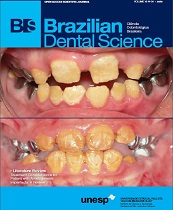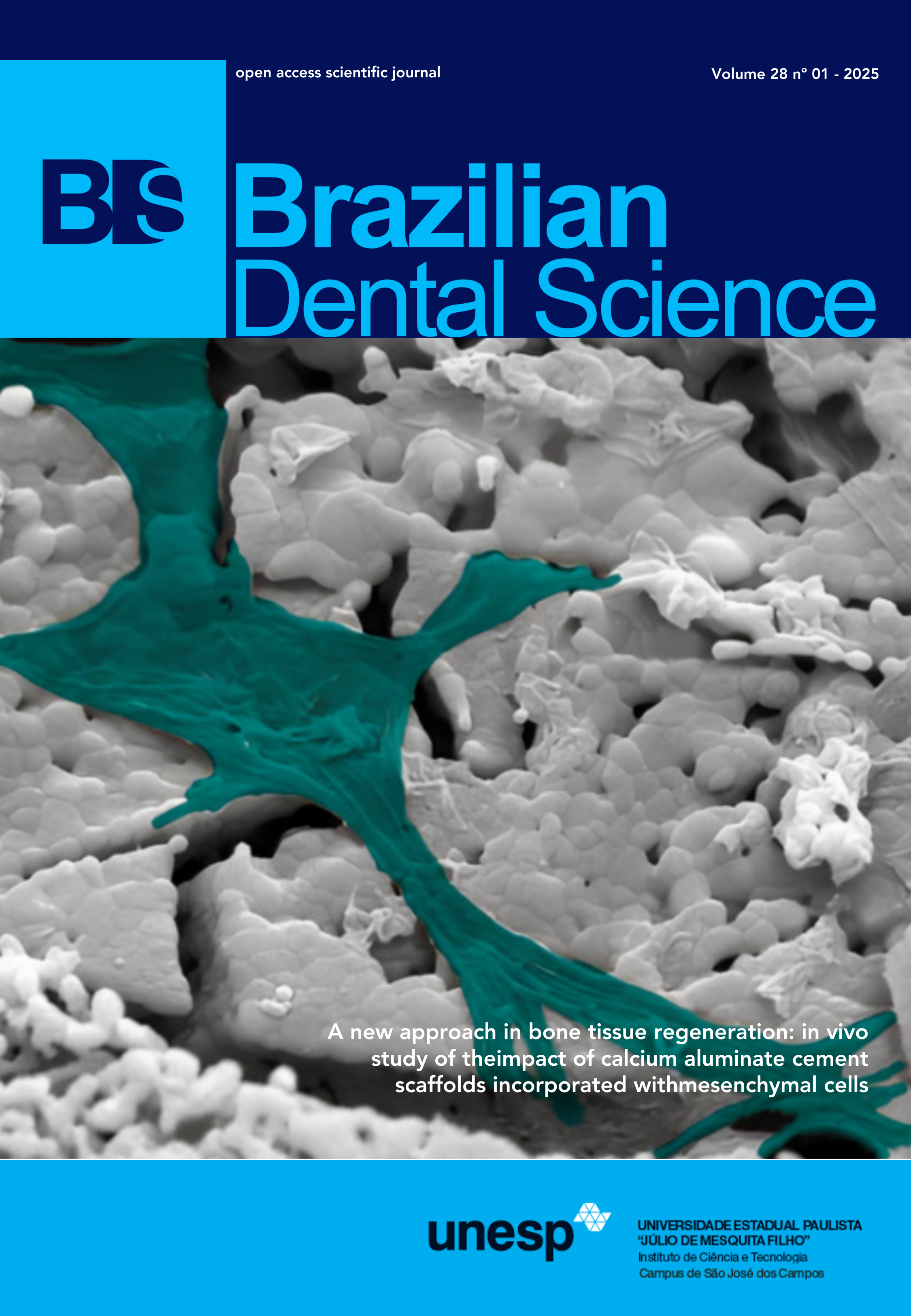Masticatory muscle activity evaluation by electromyography in removable partial denture users
DOI:
https://doi.org/10.14295/bds.2013.v16i4.917Abstract
Objectives: The aim of this study was to evaluateby electromyography the activity of the temporalisand masseter muscles in removable partial dentures(RPDs) users, before and after new RPDs installation.Material and Methods: Ten patients were selectedfor this study. All subjects were edentulous in theposterior mandibular region (Kennedy class I orII), fully dentate in the antagonist arch, and dentalprosthesis users, which needed to be replaced. Theelectromyographic activity (EMG) recorded thesuperficial masseter and temporalis muscles, duringthe maximum voluntary bite force and the restposition. Maximum mouth opening was also verified.The measurements were recorded at four specifictimes: using the old prosthesis (T0), right after thenew prosthesis installation (T1), two weeks (T2) andfour weeks (T4) after installing the new prosthesis.All the RPDs were made by an experienced dentistand the same laboratory. Data were statisticallyanalyzed by ANOVA and Tukey tests (? = 0.05).Results: EMG values had high standard deviation atthe time T0. Generally, the mean values decreasedafter new prosthesis installation, especially aftertwo weeks from the installation (T2). During therest position, the left masseter and left temporalismuscles showed statistically significant gradualdecrease in their activities over time. Conclusion:New prostheses have positive effect on the patient’smuscular activity. However, an adaptation period ofthe muscle fibers to the new prosthesis is needed.
Keywords
Electromyographic activity; Dental occlusion; Masseter; Removable partial dentures; Temporalis.
Downloads
Downloads
Additional Files
Published
How to Cite
Issue
Section
License
Brazilian Dental Science uses the Creative Commons (CC-BY 4.0) license, thus preserving the integrity of articles in an open access environment. The journal allows the author to retain publishing rights without restrictions.
=================
COPYRIGHT TRANSFER AND RESPONSIBILITY STATEMENT
(PDF)
For all articles published in the BDS journal, copyright is retained by the authors. Articles are licensed under an open-access Creative Commons CC BY 4.0 license, meaning that anyone may download and read the paper for free. In addition, the article may be reused and quoted, provided that the original published version is cited. These conditions allow for maximum use and exposure of the work while ensuring that the authors receive proper credit. All metadata associated with published articles is released under the Creative Commons CC0 Universal Public Domain Dedication.
Before the submission, authors must obtain permission to reproduce any published material (figures, schemes, tables, or any extract of a text) that does not fall into the public domain or for which they do not hold the copyright. Permission should be requested by the authors from the copyright holder (usually the Publisher, please refer to the imprint of the individual publications to identify the copyright holder).
The authors hereby attest that the study is original and does not present manipulated data, fraud, or plagiarism. All names listed made a significant scientific contribution to the study, are aware of the presented data, and agree with the final version of the manuscript. They assume complete responsibility for the ethical aspects of the study.
This text must be printed and signed by all authors. The scanned version should be submitted as supplemental file during the submission process.



